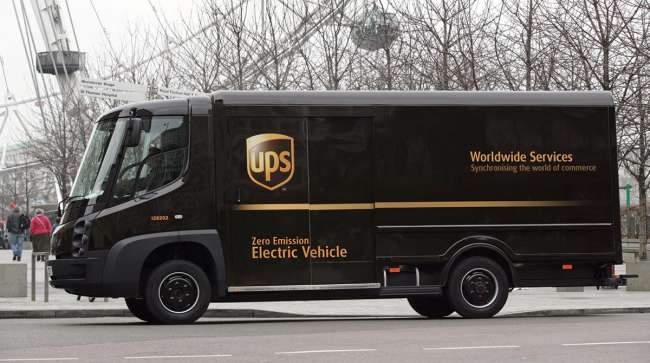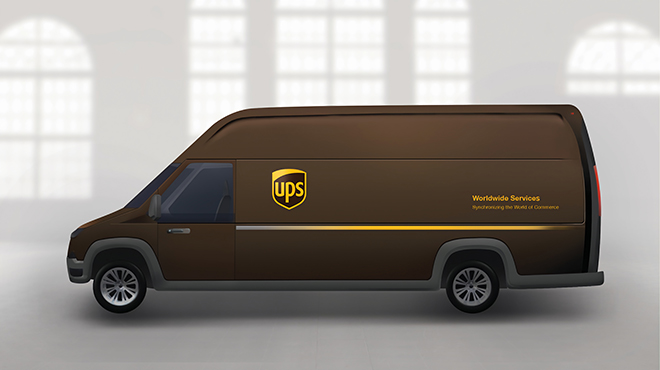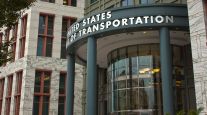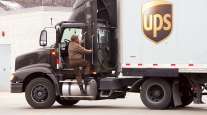Senior Reporter
UPS to Add Zero-Emissions Delivery Trucks

UPS Inc. announced it will deploy 50 newly designed plug-in electric delivery trucks by the end of the year. The vehicles are comparable in acquisition cost to its conventional-fueled package delivery trucks without the use of subsidies — a development it calls an industry first and one that breaks a key barrier to large-scale fleet adoption.
The company has collaborated with vehicle electrification company Workhorse Group Inc. for more than four years on the design of the lighter cab-forward Class 5 zero-emissions vehicle, which has the same cargo space and capacity as the near-ubiquitous UPS package delivery vans seen on the road today.
“It’s a pretty major breakthrough and we are really excited by this. It is the next step,” Rick Jordan, UPS automotive senior director of maintenance and engineering for delivery fleet, told Transport Topics.
“This is a brand new design and that allows us to do more with the components, composites and the [electric motor] technology available right now to bring this together,” he said.
The vehicles provide nearly 400% fuel-efficiency improvement compared with internal combustion engines, according to Loveland, Ohio-based Workhorse. Each truck will have a range of about 100 miles between charges. Workhorse did not immediately respond to a request for comment.
The first trucks will run on urban routes in Atlanta, Dallas and Los Angeles.
UPS ranks No. 1 on the Transport Topics list of the largest for-hire carriers in North America.
“We are going to look at these first 50, getting them on the ground, putting them in the fleet, getting them some laps and seeing if there are any tweaks we need to make and then look forward to what the next steps are,” Jordan said

Artistic rendering of plug-in electric delivery truck (UPS Inc.)
Those next steps could be wide-ranging.
“We have identified about 35,000 routes that this platform, as far as cube size, would fit. So there’s obviously opportunities for a big segment of our fleet,” Jordan said.
Following the test deployments, UPS and Workhorse will fine-tune the cab-forward design in time to deploy a larger fleet in 2019 and beyond, according to a statement from the companies.
“We are just really excited about working the plan together and bringing these first 50 on, and then we’ll take it from there,” Jordan said.
UPS has more than 300 electric vehicles deployed in Europe and the United States, and nearly 700 hybrid-electric vehicles. The company also recently ordered 125 new fully electric Class 8 tractors to be built by Tesla in 2019, the largest pre-order to date. Additionally, in September, UPS announced it will become the first commercial customer in the United States for the Fuso eCanter medium-duty cabover electric truck from Daimler Trucks. It will add three to its fleet.
UPS has worked closely with Workhorse to ensure the new vehicle’s driveability is comparable to the conventional delivery vehicle the company uses, Jordan said, noting that power delivery is different between electric motors and internal combustion engines.
“[Electric motors] can give you all their power immediately,” he said. “You don’t want to make it too strong or too weak. The goal is define that sweet spot to have a very good driver experience and reap all the benefits electric motors give you.”
UPS intends to work with the local utilities to determine the best time for charging the trucks using a smart-grid approach, Jordan said. “We definitely encourage working with [the utilities] to go with the cleanest power we possibly can,” he said.
This latest initiative will help UPS attain its goal of one in four new vehicles purchased by 2020 being an alternative-fuel or advanced technology vehicle. The company also has pledged to obtain 25% of the electricity it consumes from renewable energy sources by 2025 and replace 40% of all ground fuel with sources other than conventional gasoline and diesel, an increase from 19.6% in 2016, according to the company.




